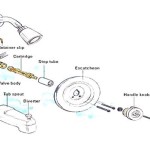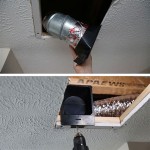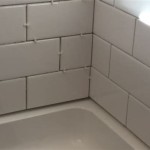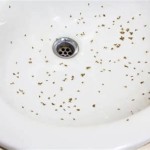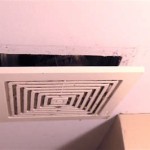Essential Aspects of Bathroom Sink Plumbing Layout
Designing a functional and visually appealing bathroom requires careful consideration of various aspects, including the plumbing layout of the sink. Proper planning ensures the efficient operation of bathroom fixtures and contributes to a comfortable and convenient space.
Here are some essential aspects to consider when planning your bathroom sink plumbing layout:
1. Fixture Placement:
Determine the ideal location of the sink within the bathroom space. Consider the placement of other fixtures, such as the toilet, shower, and bathtub, to ensure adequate clearance for movement and accessibility.
2. Water Supply Lines:
Hot and cold water supply lines need to be brought to the sink location. Plan the routing of these lines to minimize the risk of leaks and ensure efficient water flow to the faucet.
3. Drain Assembly:
The drain assembly is responsible for removing wastewater from the sink. Proper installation of the drainpipe, including the P-trap, prevents foul odors and ensures smooth drainage.
4. Faucet Selection:
Choose a faucet that complements the style and functionality of the bathroom. Consider the type of mounting (wall-mounted, deck-mounted, or freestanding) and the number of handles. Ensure compatibility with the water supply lines and drain assembly.
5. Ventilation:
Bathroom sinks generate moisture, which can lead to condensation and mold growth. Install an exhaust fan or open windows to provide proper ventilation and prevent moisture buildup.
6. Accessibility:
Consider the height and reach of the sink to ensure it is accessible for all users. Barrier-free bathrooms may require modifications to the plumbing layout for accessible fixtures.
7. Maintenance:
Plan the plumbing layout to allow for easy access to valves, fittings, and drain traps for maintenance and repairs. Consider using flexible supply lines to facilitate removal of fixtures.
8. Safety:
Ensure that all plumbing connections are secure and meet local building codes. Use anti-scald devices to prevent accidental burns. Install ground fault circuit interrupters (GFCIs) to protect against electrical hazards.
By following these essential aspects, you can create a functional and well-designed bathroom sink plumbing layout that meets your needs and enhances the overall aesthetics of the space.

Bathroom Sink Plumbing Diagram Diy Sinks Drain Kitchen Remodel

How To Plumb A Bathroom With Multiple Plumbing Diagrams Hammerpedia

Bathroom Sink Plumbing

Gallery Of Bathrooms Basics 6 Tips To Plan Your Bathroom Plumbing And Layout 11

17 Ideas In 2024 Plumbing Installation Diy Bathroom

Simple Tips On How To Use A Plumbing Diagram For Bathroom Nir

Installing A Bathroom Sink Drain Efficient Plumber

Index Php 550 396 Bathroom Plumbing Diy Residential

How To Vent A Toilet Sink And Shower Drain

Gallery Of Bathrooms Basics 6 Tips To Plan Your Bathroom Plumbing And Layout 13
Related Posts



